It is difficult to argue that proper grape care is directly related to the quantity and quality of the future crop. Plays a particularly important role preparation for wintersince errors here can be very expensive. Therefore, pruning grapes in the fall and shelter for the winter are one of the most important care procedures that both a beginner and an experienced host need to know. Proper entry into the winter is the key to a good state of vines and a plentiful harvest.
Content
Reasons to prune
First of all, it is necessary to clarify whether it is necessary to cut the grapes for the winter and why. This procedure is very important for the plant, and for several reasons.
Grapes - a pretty tender plant and badly tolerating the cold season. Severe frosts under an unfortunate combination of circumstances can completely destroy him, so many winegrowers prefer to protect the bush, covering it for the winter. Trimming helps to do this more efficiently, and besides, it increases its frost resistance.
 You may be interested in:
You may be interested in:Like many fruit plants, without proper control, grapes can grow so much that they block sunlight. The berries in this case grow small and ripen poorly, and the vine itself is poorly developed. Trimming excess shoots helps to avoid such problems, and also simplifies maintenance and makes it easier to deal with the formation of a bush.
Necessary tools
Before you start pruning the vines, it is advisable to make sure that there is a set of suitable tools for this. They will help to carry out the procedure as quickly as possible. and efficiently, which will simplify the task of the gardener:
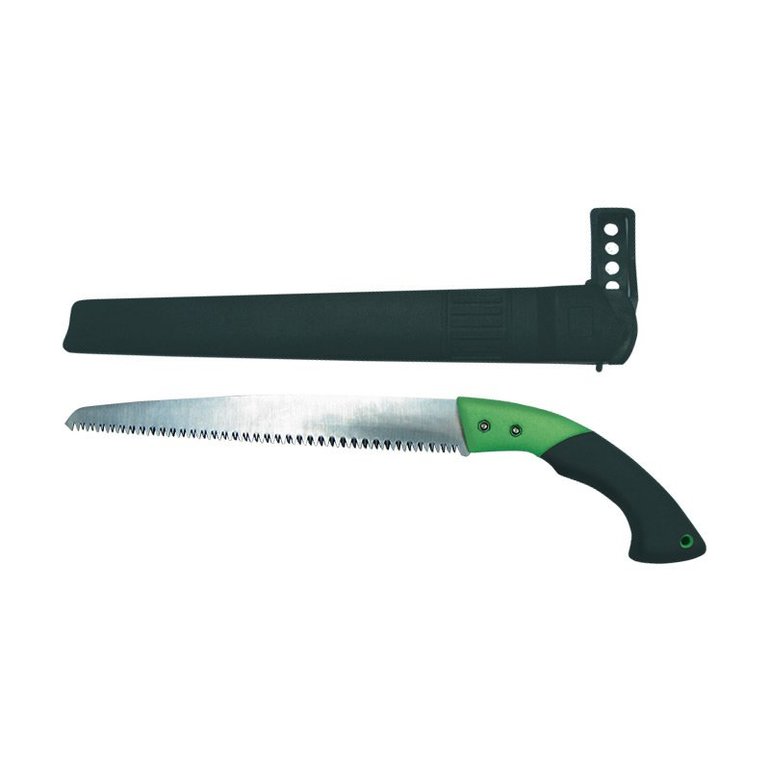
- Garden hacksaw. This tool, similar to a rounded conventional saw, is commonly used to rejuvenate undergrowth of older shoots that are too thick to be easily cut off with a pruner.
- Secateurs. One of the main tools in the arsenal of the gardener, allowing you to easily cut off thin branches and shoots. The main advantage of the secateurs is the ability to leave even, smooth sections, so the plant is less injured.
Types of Procedure
So, when asked whether cut grapes for winter, the answer is received, it is necessary to deal with the intricacies of the cropping itself. There are several types of this procedure., each of which pursues its own goals:
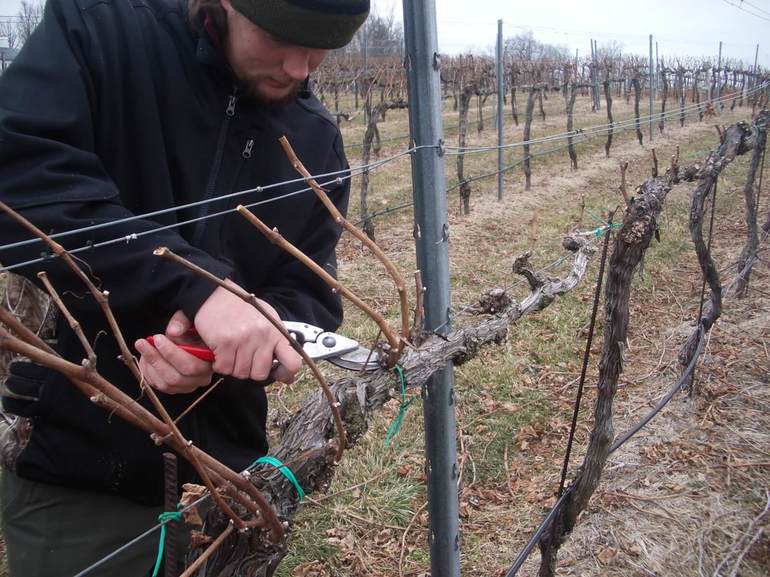
- Formative pruning. It is carried out while the plant is still very young - from 1 year to 3 years. As the name implies, the purpose of this procedure is to shape the future grape bush. In addition, the removal of excess shoots strengthens the plant and helps it grow healthy and strong, which cannot but affect the harvest.
- Annual pruning. A compulsory element of grape care, which one way or another will have to be mastered by every grower. It is carried out on all bushes that have reached the age of 4 years and older, it is intended in order to help the grapes to maintain a given shape.
- Anti-aging pruning. This species is intended to replace old and decrepit shoots with more recent and younger ones. It is carried out on age bushes, the shoots of which have grown too much or have acquired too rotten wood.
Winter preparations
Since grapes are a culture that does not differ in frost resistance, it is very important to ensure that they enter correctly in winter. For this, there are several areas of care that will help to properly prepare the plant and protect it in the most difficult times.
Suitable dates
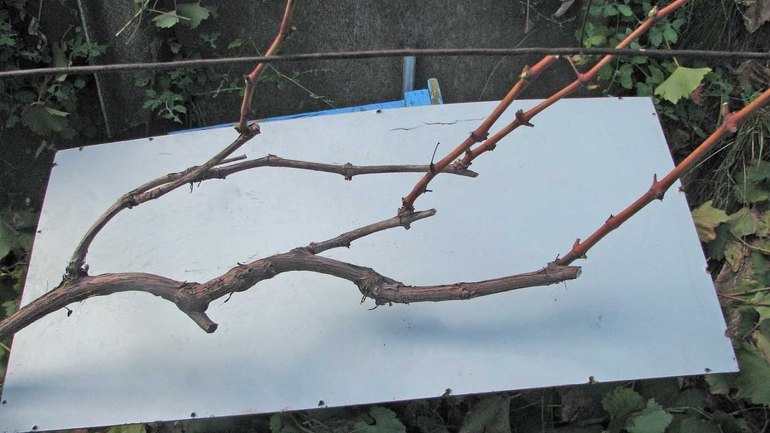
You can trim the grapes in both autumn and spring. However, the second option is more often used to remove frozen, broken or diseased shoots or in regions with severe winters, where it is not possible cover the grapes.
The minus of spring pruning is considered to be “lacrimation” associated with difficult healing of wounds in grapes: if you cut the vine at the very beginning of sap flow, then “tears” will appear for a long time. The result of unsuccessful pruning may even be the death of the plant. Therefore, in the spring, autumn seedlings or young plants that have not yet begun to bear fruit are often cut. This usually happens in March, when a temperature of at least + 5 ºС has already been established.

Many consider autumn pruning the most optimal, especially if it is accompanied by sheltering grapes for the winter.
It is usually carried out in two stages:
- The first begins immediately after the harvest. Once all the clusters have been removed, you can clean the bush from excess and weak shoots that interfere with development.
- The second stage is the main one. Spend it about two weeks after the plant dropped its leaves and began to prepare for wintering. It is important to ensure that the air temperature is not lower than -3 ºС.
General scheme
Despite the many different types of cropping, the scheme for all of them is largely similar, differing only in details. It’s important to remember that the procedure must be approached with well-sharpened tools, to avoid "chewing" of plant tissues and splitting of wood:
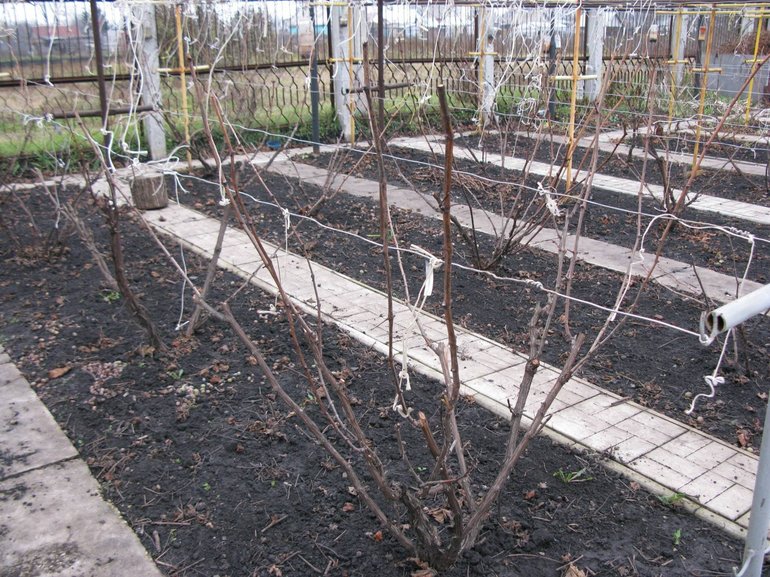
- In the middle lane, grape pruning for the winter begins with a check to see if it has all the components formed, among which special attention should be paid to the sleeves - perennial shoots that make up the fruiting base of the bush. The life cycle of these branches is about 6 years.
- Mandatory removal is subject to broken branches, areas where signs of the disease are clearly visible, unripened green shoots and too old sleeves.
- The exact amount of sleeves left may vary, but on average, the optimal amount is from 5 to 8. It is important to ensure that they do not thicken the bush and do not obscure each other.
- In the process of removing excess growth, you can focus on the number of kidneys. Usually, taking into account the possible winter freezing, they are left with a margin of 80-120 pieces. In the spring, after opening the bush, you can remove the excess.
Pruning a perennial bush can be somewhat more difficult, especially if the grapes have not been pruned before. However, there is a general scheme here, according to which it will be more convenient to carry out the procedure:
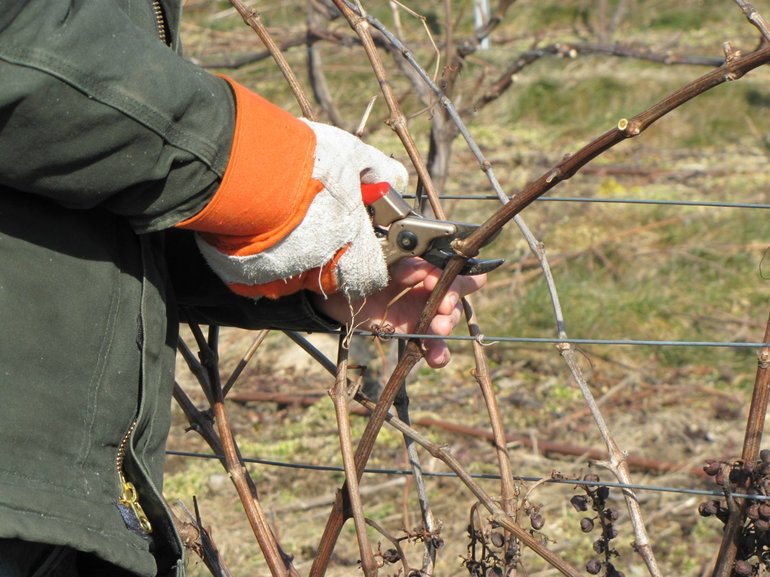
- It will be easier to implement it if the grapes are attached to the trellis, with a wire or rope stretched at different distances.
- In early autumn, after harvesting, young shoots that appear above the first tier - about half a meter above the ground are removed.
- Those shoots that have grown above the second tier — about 30 cm higher than the previous one — need to be cut by 10-15% of the total length and cut off all the lateral processes.
- After the end of leaf fall, approximately in the middle of October, it is necessary to select 2–3 of the strongest shoots at the level of the first and second tiers.
- The shoot that is located below and on the outside of the sleeve will need to be cut off, leaving 3-4 fruit buds on it. The resulting branch is called the replacement knot.
- The branch located above will also need to be cut, but leave more eyes on it - in the region of 5−12. This is the future fruit arrow.
Care after circumcision

Winter pruning is an important element of care, but not the only one. In particular, it is necessary to warm the plant well, since the trimmed bush becomes even more sensitive to cold.
When is the best time to cover grapes? It is believed by many that the most suitable time is after the first frost, since too early a covered bush can “lock up”, which subsequently will negatively affect its condition.
Young grapes should be covered especially carefully. After the plant was cut and treated with fungicides and antiparasitic agents, the shelter is carried out in two stages:
- Hilling. A very simple method of shelter, the essence of which is to sprinkle the bottom of the shoots with a moist layer of earth - this will help protect the roots from freezing. The height of the resulting slide should not be higher than 30 cm.
- Directly shelter. There are many materials with which you can cover the plant: plastic wrap, agrofibre, hay, straw, spruce spruce branches, burlap, etc. Each grower has his own way to “wrap” the grapes before winter, and to a large extent it depends on the region and the severity of the local climate.
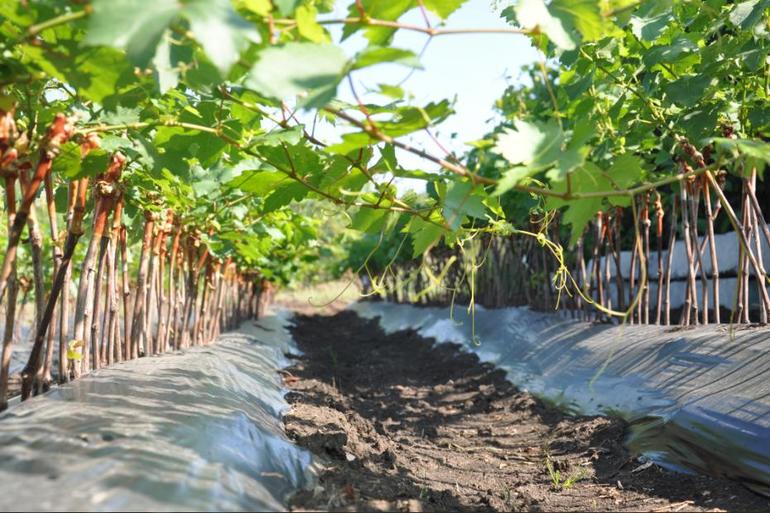




 Non-covering winter-hardy grape varieties for Moscow region
Non-covering winter-hardy grape varieties for Moscow region How to keep the vine in winter
How to keep the vine in winter When can I transfer grapes to another place in the fall
When can I transfer grapes to another place in the fall How to cover and prepare grapes for the winter in the suburbs
How to cover and prepare grapes for the winter in the suburbs